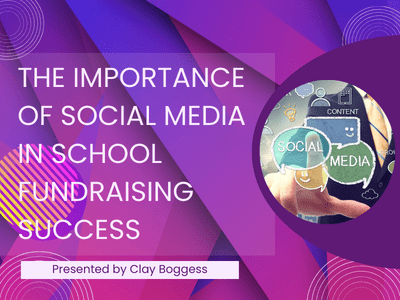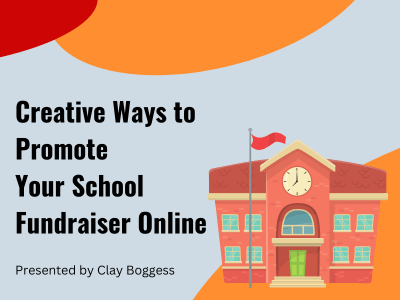
The pros and cons of brochure fundraising.
When it comes to raising money, there are several things to consider. For instance, should you do your in-house program, like a carnival, or work with an outside company?
Whatever type of fundraiser you may consider for your school has advantages and disadvantages. The goal is to choose one that has the most upside and least downside possible. Once you determine this, the money will follow.
Some schools will hear about how well another school did with a particular in-school event or brochure fundraising sale and use that as the basis of their own decision. The problem is that some differences may cause the campaign to not go as well for them.
Determining the best way for your school to raise money is a necessary process that shouldn't be taken lightly. Schools need to understand demographics, how money needs to be collected, and the type of product people might ultimately respond to.
So how do you know if a catalog sale is right or wrong for your school?
Types of School Fundraisers
For simplicity's sake, let's assume that schools can choose between doing their in-house fundraising event or working with an outside company.
Fundraising Events
Two classic examples of 'DIY' fundraising are the school carnival and auction. Often these are combined into one event.
Carnivals are seen by many as a great way to get families together for some fun and interaction. Tickets can be purchased in advance for a discount, and then additional money can be raised through the various activities inside. Many schools are successful in raising additional revenue by incorporating a silent auction.
Other examples might plan a dinner where people are charged a certain fee. Bringing in a guest speaker can add value and draw a larger audience. Some schools might also incorporate a dance.
Products and Services
Companies typically specialize in offering school products to sell and profit from the retail amount. Brochure fundraising and selling products directly are probably the most common methods schools employ. In 2014, AFRDS, a trade association devoted exclusively to the product fundraising industry, reported that schools and non-profits netted nearly $1.4 billion.
However, schools don't have to sell a physical product when working with an outside company. Fundraisers that incorporate companies can take on many different forms. Here are just a few examples:
- Scrip Fundraising – Schools purchase gift certificates from popular retailers at a discount in exchange for guaranteed customers and goodwill advertising.
- Read-a-thons – A way to raise money by getting people to support students who spend a few weeks focused on reading.
- Jog-a-thons – Students collect pledges from people per lap, and then the money is collected based on how far they go.
- Online Donations – Companies like Fundly offer online money-raising platforms to schools in exchange for a fee.
Schools can raise money in many other ways, like working to obtain grants from agencies, foundations, or corporations. Some schools are fortunate enough to have individual donors.
Should You Consider a Brochure Fundraiser Company?
One advantage that these companies offer is convenience. Most of the preparation and promotional legwork is done for you. The fundraiser company already has systems in place that can be easily integrated. Of course, schools pay for this, but not after they've raised the money.
These companies typically offer two ways to raise money. One is to have students and parents show a sales brochure to friends and family. The school then submits the orders to the company for processing and deposits the money. This is referred to as the order-taker method. In this case, payment to the company is usually made after the school receives the merchandise.
Learn three ways to find the perfect school fundraising brochure
Some catalog companies also make their products available for purchase on their website. Schools usually submit purchase orders. Unlike showing items in a catalog, sellers show the actual products to potential buyers. This is known as 'direct selling' or 'point of sale purchasing' because the seller exchanges the product for money in a single transaction.
There are pros and cons to each method, so let's look at both:
Brochure Fundraising
Pros:
- Buyers usually have a more extensive selection of items to choose from.
- Schools are invoiced for items that have already been preordered and paid for.
- Payment is due to the company after the orders and money has been collected.
- Most companies offer free prizes to motivate group members to sell.
- Merchandise delivered to the school is prepacked by the seller.
Cons:
- Sellers don't have the actual product to show potential buyers.
- Many people feel that the items in the typical catalog are overpriced compared to what they receive.
- Sellers must visit their customers twice; once to take the order and a second time to deliver the items.
Point of Sale Fundraisers
Advantages:
- People get to see the item before they pay for it.
- Single-visit transaction. Hand over the item and collect the money.
- Students can sell many lower-priced items, like beef jerky, to their peers.
Disadvantages:
- Potential leftover product due to ordering too much upfront.
- Occasionally schools report that the seller does not return money after the product has been distributed for making a sale.
Determining the best possible fundraiser for your school may not be easy; however, considering the pros and cons of the various options can help you make the right choice.
Author Bio
Clay Boggess has been designing fundraising programs for schools and various nonprofit organizations throughout the US since 1999. He’s helped administrators, teachers, and outside support entities such as PTAs and PTOs raise millions of dollars. Clay is an owner and partner at Big Fundraising Ideas.



